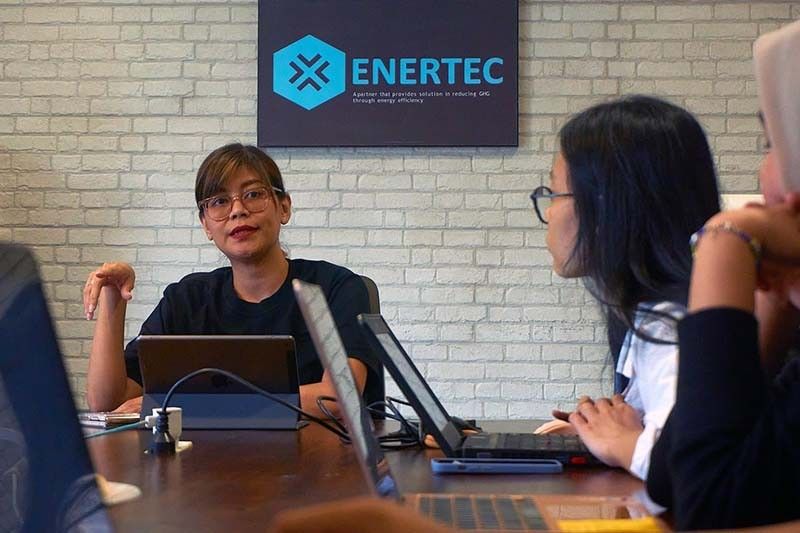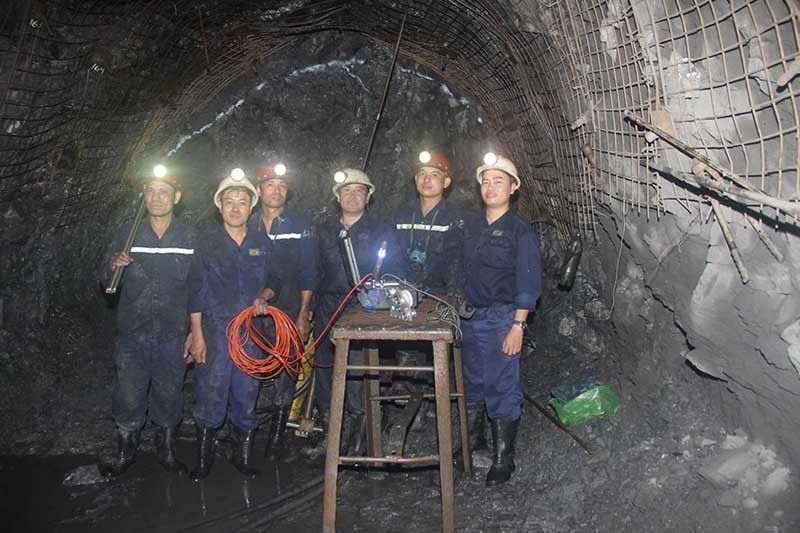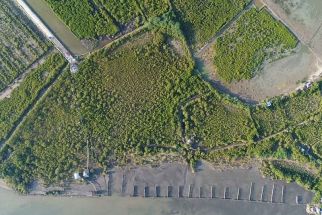Women, laborers, indigenous peoples at the heart of Southeast Asia’s energy transition

MANILA, Philippines — Southeast Asia, home to nearly 700 million people, is one of the most vulnerable regions to the impacts of climate change. It faces rising sea levels, increasingly intense cyclones, and more severe flooding, droughts and heat waves.
As these climate hazards intensify, there is an urgent need for countries in the region to ditch fossil fuels and transition to renewable energy sources to help protect the livelihoods and well-being of millions.
Aside from combating climate change, the energy transition is also essential for Southeast Asia to address energy poverty, enhance energy security, support sustainable development, and ensure social inclusion.
While Southeast Asian nations have already committed to reduce greenhouse gas emissions and increase the use of renewable energy, the path toward a just energy transition in the region remains fraught with challenges.
Here’s a look at how the shift to cleaner energy affects different sectors in Indonesia, Vietnam and the Philippines.
Indonesia: Navigating gender equity

Indonesia was the first Southeast Asian country to receive funding from the Just Energy Transition Partnership (JETP), a financing scheme that aims to assist developing countries in accelerating their shift to clean energy sources and reducing dependence on dirty fuel such as coal.
The archipelagic country has drafted a strategy to achieve gender equality while transitioning its energy sources. However, the implementation is still in question and requires work from all parties to ensure that minority gender groups are well represented in the process.
In November, the Indonesian government finally published the long-awaited investment plan for the energy transition funding, known as the Comprehensive Investment and Policy Plan (CIPP).
The CIPP has a special chapter stipulating the principles necessary to achieve a just energy transition, which include a provision on gender equity. The government-sanctioned JETP Secretariat, which drafted the plan, emphasized the importance of pushing for gender equity in Indonesia, noting that “women historically do not have proportional access to the socio-economic benefits of Indonesia’s economic development.”
“A just energy transition must watch for gender equity by creating proper employment for women and increasing their capacity through technical and entrepreneurial training,” the secretariat said.
A 2019 survey by the International Renewable Energy Agency (IRENA) found that male still dominated the energy sector, with only 32% of workers being women. Most of them were primarily in administrative positions, such as desk secretary, rather than strategic decision-making roles.
Including gender perspective in the JETP investment plan was only the first step, as the country still has a long to-do list to ensure a truly fair energy transition for all, according to Marlistya Citraningrum, a senior analyst with the Institute for Essentials Services Reform (IESR).
“We need to know the baseline and know what each group needs in order to push for a just transition,” Marlistya said. “After mapping all those needs, then we can continue to push for intervention measures.”
One example of the intervention measures is increasing the number and quality of job openings in the renewable energy sector. Some women Marlistya spoke with highlighted the need for improved working conditions and expanded networking opportunities to draw more women into the renewable energy sector.
“Green job must be seen as a proper job,” she said.
But Indonesia has made some progress in gender representation in the energy sector. A recent study by New Energy Nexus Indonesia found that nearly half of clean energy tech startups in the country were led by women entrepreneurs.
Women play a crucial role in the energy sector not only as users but also as decision-makers on energy usage and efficiency, according to civil group Women in Mining and Energy (WIME). WIME advocates that women should hold strategic positions to influence energy policies in the country.
“Representation of numbers is just the first step. But that doesn’t mean they can voice out their concerns honestly due to the cultural influences that rarely give them a chance to talk,” Marlistya said, adding future policies should give room for marginalized groups to speak out.
Vietnam: Laborers in energy shift

Vietnam also commits to achieving JETP targets, including advancing the peak date for all greenhouse gas emissions from 2035 to 2030 and fast tracking the adoption of renewables to constitute at least 47% of electricity generation by 2030.
However, this energy transition will inevitably affect the livelihoods and ability to cope with economic, social and environmental impacts of some community groups, including laborers in the energy industry.
Most of the fossil fuel laborers, who have been working for decades, have yet to realize the direct impacts of energy transition on their jobs. Many of them believe that the transition is still decades away and that the impacts are still unknown. This has led to low attention to the issue.
In the emerging renewable energy labor market, there is a shortage of human resources. New energy projects need high-quality workers with skills and expertise to meet job requirements.
But the processes of building the legal framework, implementing policies and national standards, and opening new majors and admissions in educational institutions all take a significant amount of time. Other issues include the duration of new programs, graduation rate, and employment rate after a four or five-year formal education program.
Tang The Cuong, director of the Department of Climate Change of the Ministry of Natural Resources and Environment, said that suitable support mechanisms for affected groups, such as laborers, need early assessment and planning. The implementation must be synchronous and transparent to all affected communities.
He highlighted the importance of comprehensive participation of affected working groups in all levels of policymaking to ensure that their needs and concerns are considered in decision-making.
Ramla Khalidi, resident representative of the United Nations Development Program (UNDP) in Vietnam, stressed the need to offer compensation, generate alternative livelihoods, provide training opportunities and establish social safety nets to affected workers and communities
Upskilling, reskilling and retraining will enable workers from coal power plants and coal mines to secure positions in the renewable energy sector or other industries that emerge from the energy transition.
Nearly a year after Vietnam signed JETP, the government has released a series of important legal documents to create macro-level policies and mechanisms for implementing the plan.
However, completing the legal framework is just the first step in achieving a just energy transition. The central government must establish equitable energy transition mechanisms for all stakeholders, and local governments, businesses, and related parties must also make similar commitments.
Moreover, comprehensive legal documents are needed to provide guidance and specific regulations for each group, each energy sector, and each social security regime. A lack of specific policy mechanisms will lead to many challenges in the implementation of a just energy transition.
Philippines: Balancing critical mineral development with indigenous rights

In the Philippines, the government is taking the lead in exploring mineral deposits of critical minerals such as nickel and lithium that are needed to manufacture electric vehicles and storage for power produced by solar and wind farms. In 2022, the country was the world’s second largest producer of nickel ore next to Indonesia.
The Philippines is also aiming to become a hub for minerals processing and the production of renewable energy systems, electric vehicles and battery components.
In November, the Philippines and the United States formalized a partnership to operationalize a Washington-funded P280 million technical assistance program to develop the archipelagic nation’s critical mineral sector.
But the push for clean energy transition is putting pressure on indigenous peoples, whose lands are the sites or near mining projects. A paper published by the Legal Rights and Natural Resources Center earlier this year found that 49% of mining projects in the Philippines are located in ancestral domains.
This can result in either the displacement of communities from their territories, loss of livelihoods, or deforestation or degradation of ecosystems where indigenous peoples depend.
The scramble for minerals is also linked to human rights violations as well as killings of environmental defenders and residents of host communities. Watchdog Global Witness reported that a third of the around 281 land and environmental defenders killed in the Philippines since 2012 opposed mining operations.
Maya Quirino, advocacy coordinator of LRC, stressed that the required free, prior, and informed consent process is not properly followed most of the time for mining projects.
“If you look at how it’s handled at the community and government levels, our protocols for dealing with communities are often not observed… Either indigenous peoples are coerced, or there are instances where offers are made in exchange for their consent,” Quirino said.
Mozaharul Alam, regional coordinator of climate change sub-programme for Asia and the Pacific of the United Nations Environment Programme, stressed the need for strategies that harness economic benefits of the extraction of critical minerals, but also minimize its negative impacts on the environment and the society.
“We must implement social and environmental safeguard, foster inclusive space for multi-sectoral engagement, and promote strategic cooperation. Let us remember that our approach should not only be the economy, but also sustainable and equitable,” Alam said during this year’s Asia-Pacific Climate Week in Johor Bahru, Malaysia last November.
For Quirino, a just minerals transition should be rights-based and uphold the entitlements of mining-affected communities. Such a shift puts decision-making, such as whether or not to open mines in their lands, in the hands of communities and local governments.
Under a just minerals transition, the government should come up with a national industrialization framework “to rationalize the role of mining in development and in the transition,” Quirino added.
Leaving no one behind
At the APCW 2023, policymakers and civil society representatives pointed out that the key elements of a just energy transition in the region include prioritizing all stakeholders and communities in transition planning, promoting skills development and local-led initiatives, and creating strong subnational policy frameworks.
A crucial aspect of this transition is ensuring that the energy transformation addresses the needs and concerns of the marginalized communities, workers in energy production, and people affected by the climate crisis.
“Just energy transition is about opening the room for justice,” Marlistya of IESR said. “We’re trying to move away from fossil-based energy to a more sustainable and inclusive system. Therefore, it’s important to include perspectives from marginalized groups as well.”
For Beverly Besmanos, national coordinator of Bantay Kita in the Philippines, it is important to ask the following questions in the just transition discourse: “Who will the energy transition benefit? And who holds the justice in the ‘just’ energy transition?”
At the COP28 climate talks in Dubai, United Arab Emirates, just transition, along with the phaseout or reduction of fossil fuel use, is at the center of energy discussions.
United Nations climate chief Simon Stiell stressed that solutions to the climate crisis are meant to be inclusive.
“Those who have contributed the least to centuries of fossil fuel emissions must be protected and assisted by those who have benefitted the most from decades of fossil fuel extraction and consumption,” Stiell said.
“If these transitions aren’t just, we won’t transition at all.”
--
Do Thuy Trang is a reporter for Vietnam Law Newspaper, a press agency under the Ministry of Justice, since 2017.
Kharishar Kahfi is a science journalist with a Master’s degree in science journalism from New York University. He covers the environment and science topics for The Jakarta Post.
This collaborative reporting story was supported by Climate Tracker and Oxfam.
- Latest
























